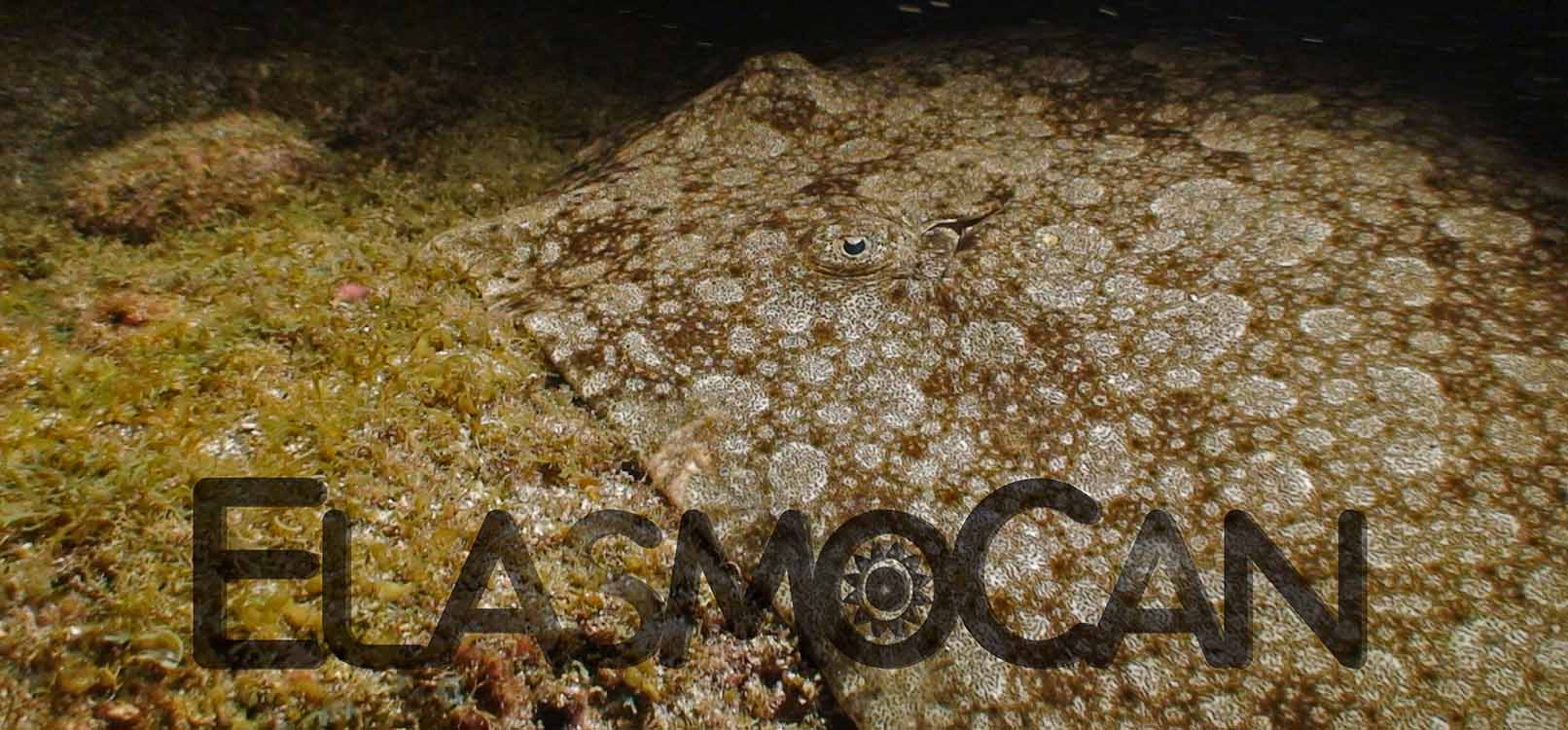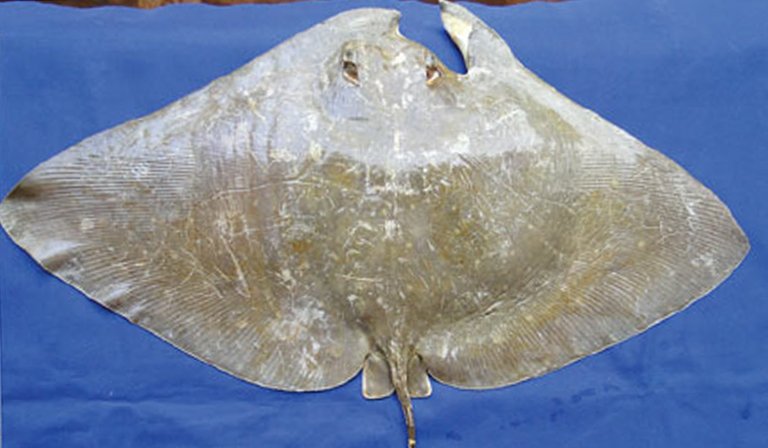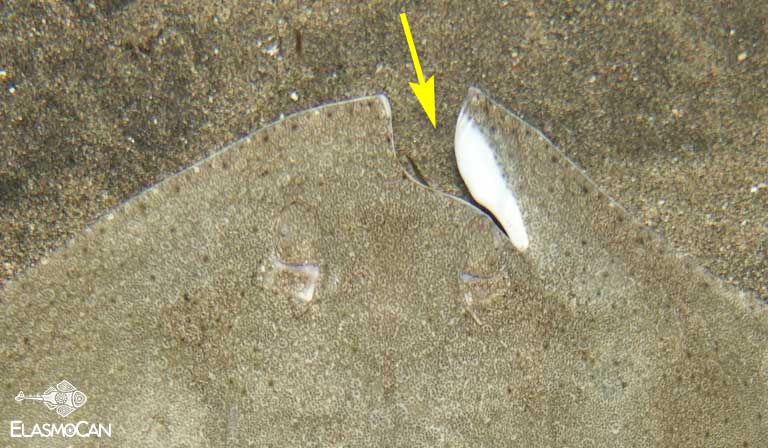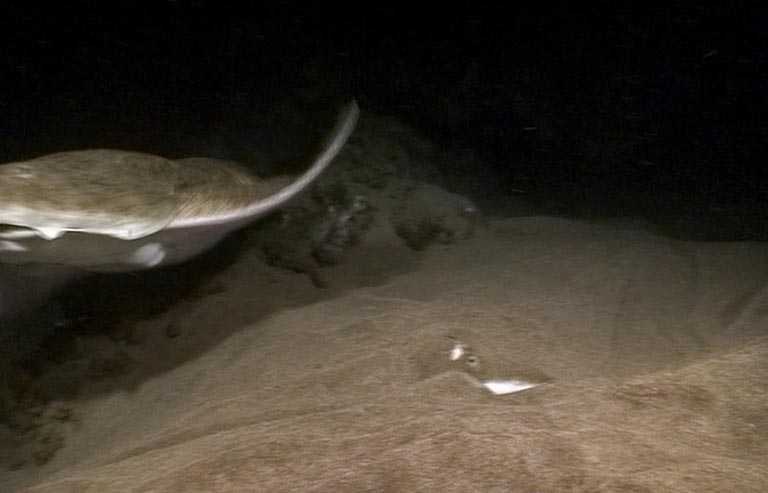Spiny butterfly ray
Spiny butterfly ray (Gymnura altavela)
The spiny butterfly ray (Gymnura altavela)
The spiny butterfly ray Gymnura altavela is one of 12 butterfly rays species known worldwide(1,2). This species has a broad distribution range and is present along the eastern and western coast of the Atlantic Ocean, including the Mediterranean Sea, the Black Sea and the Madeira and Canary Islands(1).

Morphologic abnormality

A long-tailed butterfly ray, captured in Nagapattinam (India), with an incomplete rostrum. Source: Suresh T.V., Raffi S.M. (2012) Pectoral fin anomalies in the long-tailed butterfly ray, Gymnura poecilura collected from Nagapattinam coastal waters, south-east coast of India. Mar Biodivers Rec 5:e96.
Incomplete rostrum
The first cases of a morphologic abnormality in the spiny butterfly ray are documented for individuals off the Canary Islands. This is also the first time that an anomaly is reported for an elasmobranch species in its natural environment and for this class of fishes in the Canary Islands.
An adult female spiny butterfly ray with an incomplete developed rostrum was observed in the Port of Sardina (Gáldar, Gran Canaria) during two consecutive years in 2007 and 2008. Ten years later, a juvenile female was observed in the Special Area of Conservation ‘Playa del Cabrón’ with the same malformation. These anomalies are characterized by the lack of fusion of its right pectoral fin to the cranium, leaving an opening in the anterior part of the disc which is normally closed.
Functional disadvantages
The lack of rostrum development makes that these individuals have functional disadvantages in detecting and capturing preys, swimming, manoeuvrability and camouflage compared to normal developed ones. Yet, the large size of the adult, and observations of preying, camouflage and locomotion during two years confirm that the individual was capable to compensate successfully for these handicaps.
Possible causes
The exact causes for the anomaly are unknown to us, but they might have a genetic origin or due to an obstruction during the embryonic development. However, there is insufficient knowledge about the early development processes of butterfly rays and the factors that can affect it. No matter how, both cases are remarkable for their striking similarity with the one from a butterfly ray species off India; the long-tailed butterfly ray G. poecilura.
Conservation implications
The low occurrence of affected individuals during the last decade and their survival could suggest that these instances are not a priority conservation concern in the Canary Islands at present. However, it is not possible to correctly evaluate these occurrences without knowing the exact causes.
Peer reviewed publications
The complete reports are available at:
BioMed Central vía DOI 10.1186/s41200-016-0085-7 “Morphological and functional abnormality in the spiny butterfly ray Gymnura altavela”.
Journal of Threatened Taxa vía DOI 10.11609/jott.3767.10.9.12280-12281 “Rostral anomaly in a juvenile Spiny Butterfly Ray Gymnura altavela (Linnaeus, 1758) (Elasmobranchii: Myliobatiformes: Gymnuridae) from the Canary Islands”.
(1) Last P et al (2016) Rays of the world. CSIRO Publishing
(2) Yokota L, Carvalho MR (2017) Taxonomic and morphological revision of butterfly rays of the Gymnura micrura (Bloch & Schneider 1801) species complex, with the description of two new species (Myliobatiformes: Gymnuridae). Zootaxa. (1): 001–074



